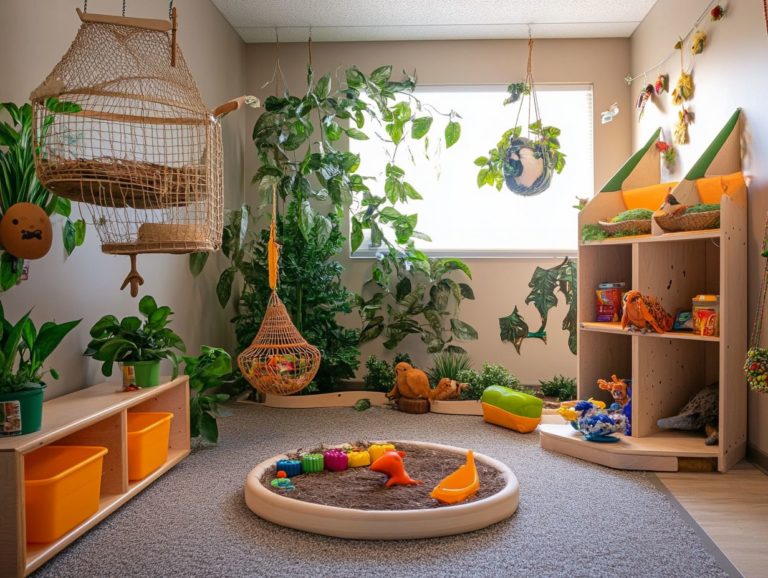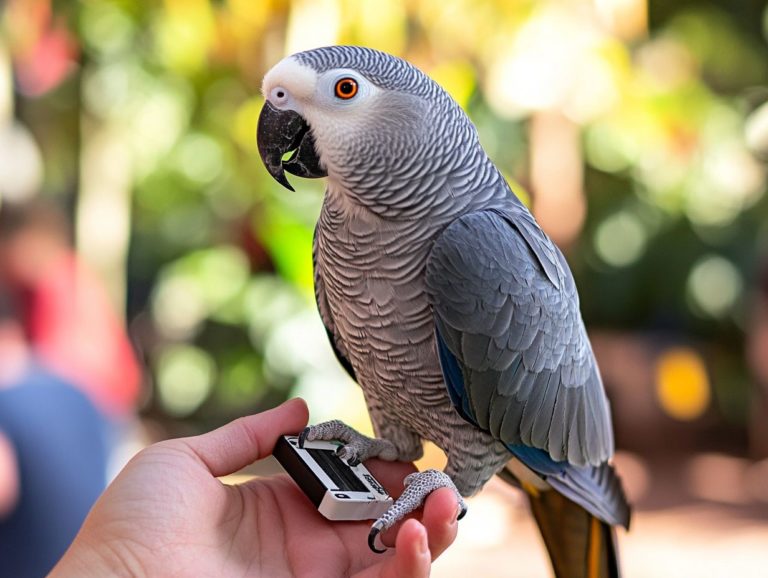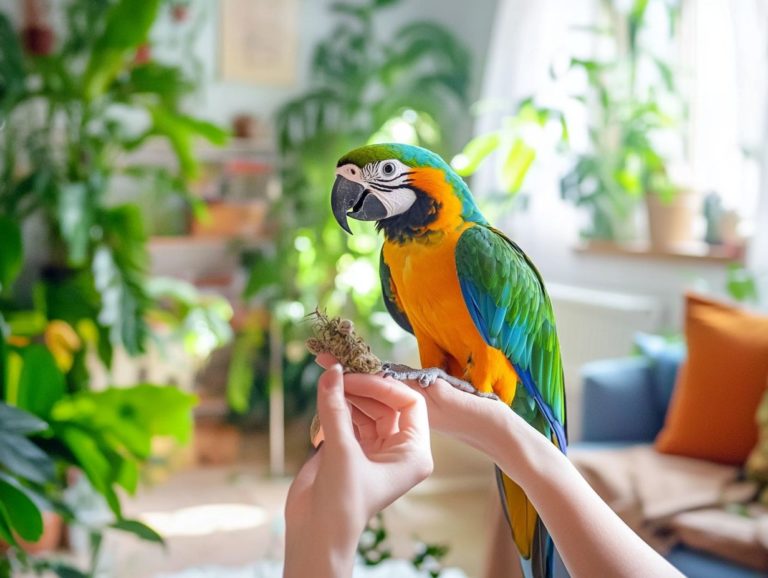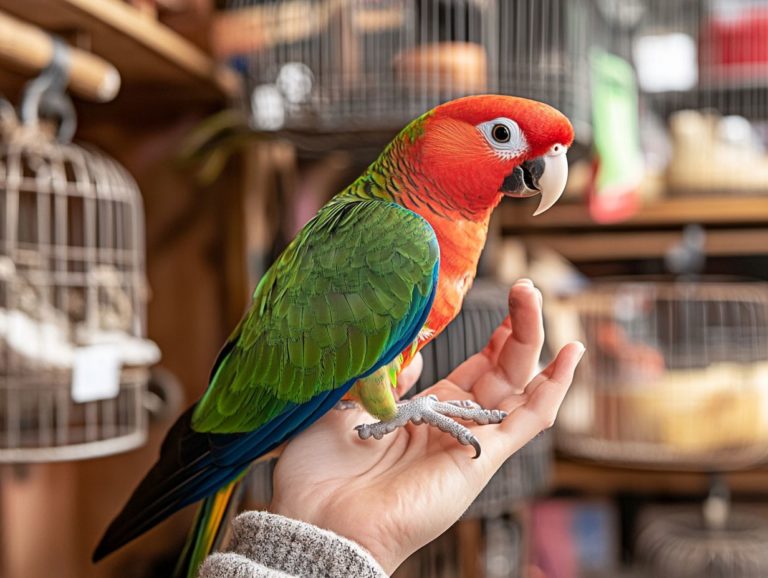Creating a Fear-Free Training Environment
Creating a Fear Free training environment is essential for effective learning. Fear can stifle creativity and hinder participation.
This article uncovers how fear affects learning. You ll discover powerful strategies to create a safe space for your pets.
From building trust to encouraging a growth mindset, you ll find techniques designed to help you thrive.
Embrace the chance to transform your training into a positive experience by incorporating FAS principles that enhance emotional well-being.
Contents
- Key Takeaways:
- The Importance of a Fear-Free Training Environment
- Identifying Fear Triggers
- Creating a Safe and Supportive Atmosphere
- Building Trust and Communication
- Encouraging a Growth Mindset
- Dealing with Fearful Reactions
- Frequently Asked Questions
- What is a Fear Free training environment?
- Why is it important to create a Fear Free training environment?
- How can I create a Fear Free training environment?
- What are some common fears that may arise during training in a Fear Free environment?
- What are some signs that a training environment may not be Fear Free?
- How can I address fear in a training environment effectively?
Key Takeaways:

- A fear-free training environment promotes effective learning by reducing fear and encouraging behavior modification.
- Identifying common fear triggers helps create a safer atmosphere.
- Building trust and addressing fearful reactions empowers learners to achieve their goals.
The Importance of a Fear-Free Training Environment
Creating a Fear-Free Training Environment is crucial for your pets’ emotional well-being. This approach gives you the power to engage effectively in veterinary care.
A stress-free environment promotes calmness and compassion. It allows your pets to learn positively within Fear Free training principles.
Understanding the Impact of Fear on Learning
The Fear Free movement highlights how fear affects a pet’s ability to learn, especially during veterinary visits.
When pets encounter stress, their instinctual response can hinder learning. For example, painful experiences at the vet may lead to anxiety and avoidance behaviors.
Incorporating strategies like creating a calm atmosphere and using positive reinforcement helps reduce anxiety. These techniques improve learning and build a trusting relationship between you and your pet.
Identifying Fear Triggers
Identifying fear triggers is essential for establishing a safe environment during training. Understanding these triggers enhances your pet’s ability to learn and reduces anxiety.
This thoughtful approach fosters a harmonious training experience.
Common Triggers in Training Settings
In training settings, you may encounter common triggers like loud noises, unfamiliar environments, and even specific veterinary practices that can instill fear and anxiety in pets.
These factors create an atmosphere that feels threatening. Pets might begin to associate training sessions with discomfort or distress.
For example, the sound of a vacuum or the excitement of children can be overwhelming. Experiences at the vet, such as vaccinations or examinations, can linger in their minds, making them wary of similar situations.
Recognizing these triggers is essential for improving animal welfare; it allows you to adopt strategies that alleviate fear and anxiety reduction.
By employing positive reinforcement techniques, such as treats or praise, you can effectively counter these anxieties. This transforms training into a more enjoyable and productive experience for both you and your pet, enhancing behavior modification.
Creating a Safe and Supportive Atmosphere

Creating a safe atmosphere is crucial for a stress-free environment where pets can truly thrive during education and training, especially in veterinary settings designed with pet-friendly design.
Practical Strategies for Reducing Fear
Implementing practical strategies to reduce fear is crucial for modifying behavior and enhancing the overall experience of your pets during veterinary visits by using Fear Free certification techniques.
By concentrating on desensitization and counter-conditioning techniques, you can help your pets associate trips to the clinic with positive experiences instead of stressful ones. This may involve gradually introducing them to the clinic environment, using treats, and creating a calm and safe space for them.
Incorporating Fear Free certified practices in veterinary clinics trains all staff in effective strategies. This training enhances their ability to recognize and alleviate fear-related behaviors, ensuring compassionate care throughout. As a result, you not only prioritize your pets’ emotional well-being but also significantly improve the quality of care and the overall relationship between your pets and their healthcare providers.
Building Trust and Communication
Establishing trust and open communication between pets and their caregivers is crucial for fostering a positive training experience. This approach aligns seamlessly with the core principles of the Fear Free movement, ensuring that both pets and their caregivers thrive in a supportive environment that promotes emotional well-being.
Effective Techniques for Establishing Trust
Effective techniques for establishing trust involve using positive reinforcement, which not only enhances learning but also supports the emotional well-being of your pets in veterinary care settings.
By incorporating methods such as offering treats, praise, or playtime during training sessions, you create a positive association with various experiences. This approach encourages the desired behaviors and helps your pets feel secure and understood in what can often be a stressful environment, key to anxiety reduction.
Building trust is crucial in the overall training process. When your pets feel safe, they become more willing to engage and learn. A supportive training environment nurtures not just obedience but also deepens the bond between you and your pets, resulting in happier and more well-adjusted companions, fostering calmness and compassion in your interactions.
Encouraging a Growth Mindset
Encouraging a growth mindset among pet parents and their pets is crucial for empowering them to conquer fear and flourish in training environments. By fostering this mindset, you enable both yourself and your furry companion to embrace challenges, learn from experiences, and ultimately thrive together in a Fear Free environment.
Empowering Learners to Overcome Fear

Empowering you to help your pets overcome fear is a foundational principle of the Fear Free movement. This significantly contributes to enhanced emotional well-being and effective anxiety reduction techniques.
By deepening your understanding of your pets’ emotions, you have the power to cultivate approaches that prioritize their comfort and security. This ultimately fosters a more trusting bond.
This method encourages you, as a pet parent, to recognize signs of anxiety and implement gentle, positive reinforcement strategies. These strategies help build confidence and align with Fear Free principles.
Integrating straightforward practices like desensitization and training exercises to help pets adjust to their fears not only alleviates fears but also enriches the overall training experience.
You ll see the connection between behavior modification and successful training outcomes as both you and your pets learn together. This paves the way for a harmonious environment and lasting emotional resilience built on trust and communication.
Dealing with Fearful Reactions
Navigating fearful reactions in pets demands a compassionate approach. This approach focuses on providing unwavering support for them during the challenging moments of training and veterinary care.
By fostering an environment of understanding and patience, you can help your pets feel secure and confident as they face their fears.
How to Respond and Support Learners in Distress
Responding to and supporting learners in distress involves employing positive reinforcement techniques. This ensures pets feel safe and secure during training and veterinary visits.
By integrating these strategies, you can create a nurturing environment that reassures animals during their more stressful moments. This embodies the Fear Free approach.
Establishing a calm atmosphere is essential. Using soothing tones while offering treats can significantly alleviate anxiety, especially during vet visits.
Recognizing and respecting each pet’s unique triggers be it loud noises or unfamiliar surroundings allows you to tailor your approach effectively.
Incorporating desensitization techniques through gradual exposure to anxiety-inducing situations can foster resilience in your furry companions. This makes them better equipped for veterinary care.
Consistent encouragement and gentle management practices will lead to a stronger bond. This results in a more confident and relaxed pet by your side, embodying the Fear Free movement.
Frequently Asked Questions
What is a Fear Free training environment?
A Fear Free training environment is one where participants feel safe, supported, and encouraged to learn without fear of judgment or punishment. It incorporates design elements that foster comfort and safety.
Why is it important to create a Fear Free training environment?

A Fear Free training environment promotes a positive learning experience. It boosts motivation and engagement, helping individuals retain information better by applying Fear Free principles.
How can I create a Fear Free training environment?
To create a Fear Free training environment, start by establishing clear expectations. Also, provide constructive feedback and promote a culture of respect and support within Fear Free Spaces.
What are some common fears that may arise during training in a Fear Free environment?
Common fears during training include fear of failure, fear of speaking in front of others, and fear of not meeting expectations. This is especially true in contexts involving canine or feline interactions.
What are some signs that a training environment may not be Fear Free?
Signs that a training environment may not be Fear Free include high levels of anxiety or tension among participants. Other signs are lack of participation or engagement and negative feedback or criticism.
Start creating a Fear Free environment today for a happier, healthier pet!
How can I address fear in a training environment effectively?
Are you ready to conquer fear in your training sessions? You can start by recognizing and understanding how people feel.
Provide support and resources. Consider getting insights from professionals like Marty Becker or Heather Lewis to guide your approach.
If needed, change how you train to help participants feel more comfortable.






